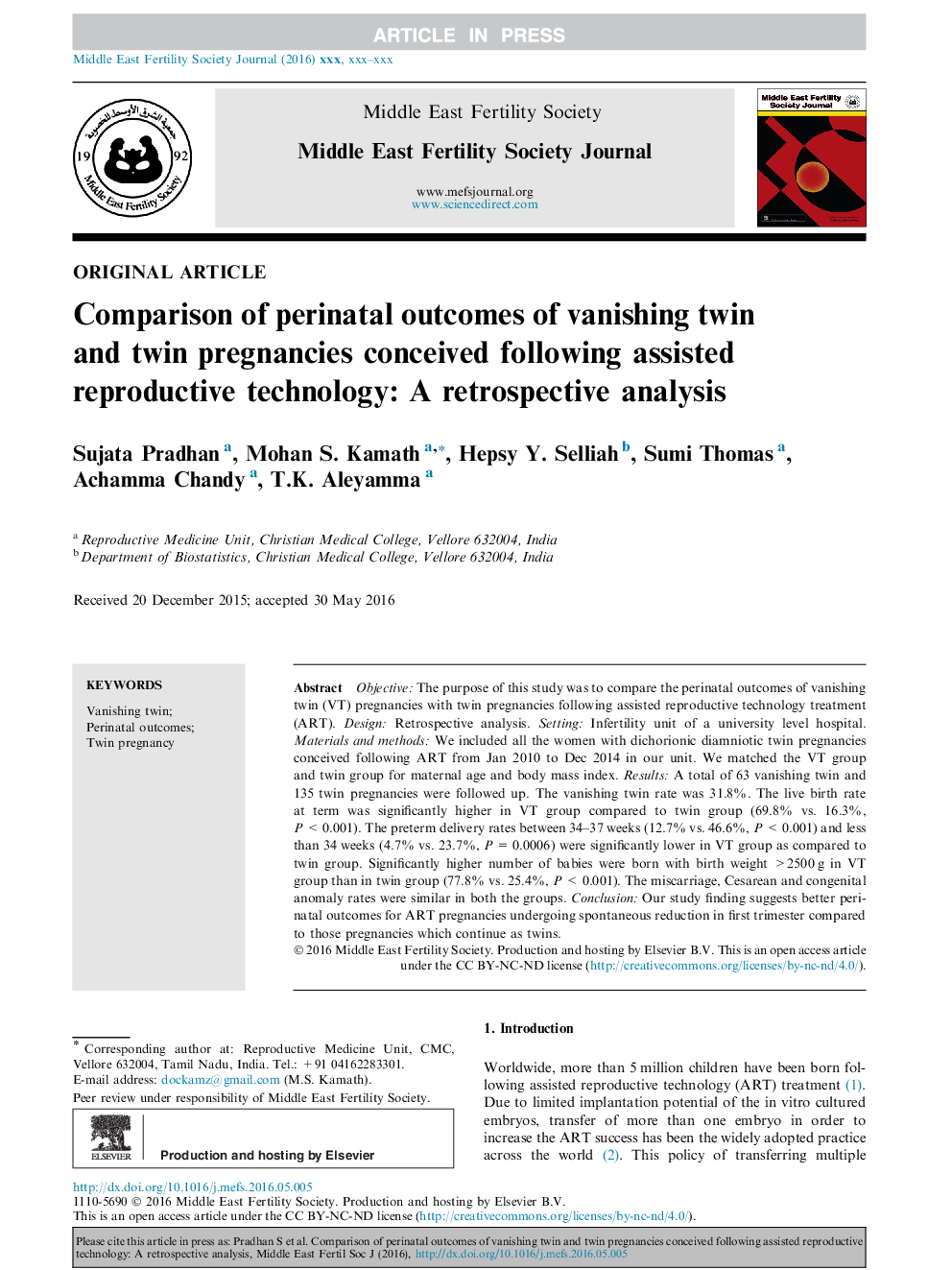| Article ID | Journal | Published Year | Pages | File Type |
|---|---|---|---|---|
| 8783347 | Middle East Fertility Society Journal | 2016 | 6 Pages |
Abstract
Objective: The purpose of this study was to compare the perinatal outcomes of vanishing twin (VT) pregnancies with twin pregnancies following assisted reproductive technology treatment (ART). Design: Retrospective analysis. Setting: Infertility unit of a university level hospital. Materials and methods: We included all the women with dichorionic diamniotic twin pregnancies conceived following ART from Jan 2010 to Dec 2014 in our unit. We matched the VT group and twin group for maternal age and body mass index. Results: A total of 63 vanishing twin and 135 twin pregnancies were followed up. The vanishing twin rate was 31.8%. The live birth rate at term was significantly higher in VT group compared to twin group (69.8% vs. 16.3%, PÂ <Â 0.001). The preterm delivery rates between 34-37Â weeks (12.7% vs. 46.6%, PÂ <Â 0.001) and less than 34Â weeks (4.7% vs. 23.7%, PÂ =Â 0.0006) were significantly lower in VT group as compared to twin group. Significantly higher number of babies were born with birth weight >2500Â g in VT group than in twin group (77.8% vs. 25.4%, PÂ <Â 0.001). The miscarriage, Cesarean and congenital anomaly rates were similar in both the groups. Conclusion: Our study finding suggests better perinatal outcomes for ART pregnancies undergoing spontaneous reduction in first trimester compared to those pregnancies which continue as twins.
Related Topics
Health Sciences
Medicine and Dentistry
Obstetrics, Gynecology and Women's Health
Authors
Sujata Pradhan, Mohan S. Kamath, Hepsy Y. Selliah, Sumi Thomas, Achamma Chandy, T.K. Aleyamma,
